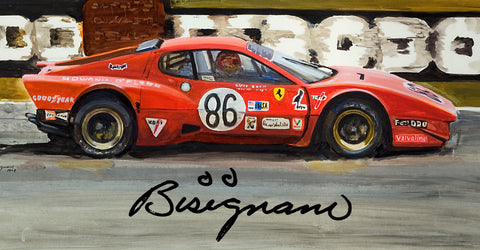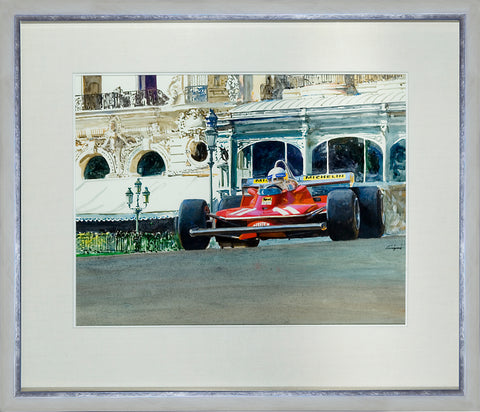Le Mans 1955 Pierre Levegh Bronze Memorial Plaque
$850.00
By 1955, Mercedes Benz had already been racing for five years after the conclusion of the Second World War. The Mille Miglia, Targa Florio, Carrera Panamericana, and 24 Hours of Le Mans topped the sports car scene, with relative newcomer Ferrari as the manufacturer to beat.
Four years earlier, Mercedes introduced its now legendary 300SL with its iconic and instantly recognizable gullwing doors. The SL enjoyed considerable racing success, and by 1953, the powers at Mercedes announced it was their intention to win simultaneous Formula One and World Sports Car championships. A lofty goal indeed!
The factory developed the remarkable W196 F1 car, and from it, the 300SLR was born, utilizing the grand prix machine's engine and underpinnings. By 1955, the 300SLR debuted at the Mille Miglia and emerged victorious, piloted by Stirling Moss and Dennis Jenkinson. In June of that year Mercedes entered three SLR's in the Le Mans 24 hour race. Jaguar fielded updated D-Types, and with streamlined body work and disc brakes all round, the British cars were highly favored.
The Mercedes teams were comprised of two drivers per car, Juan Manuel Fangio with Stirling Moss, Karl Kling with Andre Simon, and John Fitch with Pierre Levegh. In order to keep pace with the Jaguars, Mercedes added a hydraulically activated air brake which hinged upward from the car's rear deck, reducing wear and overheating on the huge inboard drum brakes.
Pierre Levegh (who's real last name was Bouillin; Levegh was the name of a favorite uncle who was a pioneering French driver) was born in Paris, and was a professional sportsman, excelling at hockey and tennis. Before his stint at Mercedes, he raced in Formula One for Talbot Lago, as well as piloting their sports cars at Le Mans.
Levegh was running sixth at the 1955 Le Mans when on the 35th lap, Mike Hawthorn, driving a D Type, shot across the track, braking hard to enter the pits. Lance Macklin, in his much slower Austin Healey was caught unaware by Hawthorn's radical move, swerved left to avoid colliding with the Jaguar. Levegh, hurtling up behind Macklin at 125 mph, had just enough time to raise his hand, warning Fangio who was following to slow down. Levegh's 300SLR clipped Macklin's Healey, riding up over it, launching the Mercedes over a low dirt and twig 'safety wall', into the dense crowd of fans behind it. The crash had the effect of a bomb blast, killing over eighty spectators, along with Levegh, and injuring over one hundred others. It is generally accepted that Levegh was blameless for the tragedy, and by raising his hand, gave Fangio just enough time to react to the incident, thereby saving his life. The accident remains the worst in racing history, and led to the withdrawal by Mercedes from racing for the following thirty years.
Aeromobilia is pleased to offer this solid bronze tribute to Pierre Levegh, sculpted by the artist E. Diosi, who did a marvelous job of capturing the likeness of the driver in middle age. The portrait medallion is an impressive 14 inches in diameter, of high relief, and quite heavy. The rim is 1 1/8 inches thick and is signed by the artist.
We are uncertain as to when this work was commissioned, but it seems probable that it was cast shortly after Levegh's passing. There is no edition number visible, so it may in fact be one of a kind. The plaque is patinated with a lovely gray-green surface, some of which has been abraded over time, revealing the raw bronze below. We have photographed the verso of the plaque with a 1:43 scale model to illustrate just how large the piece really is.
The Levegh memorial plaque is a fitting tribute to a gentleman driver who by his actions, saved the life of Juan Manuel Fangio, granting him many more years of racing, and an eventual total of five world championships.
















